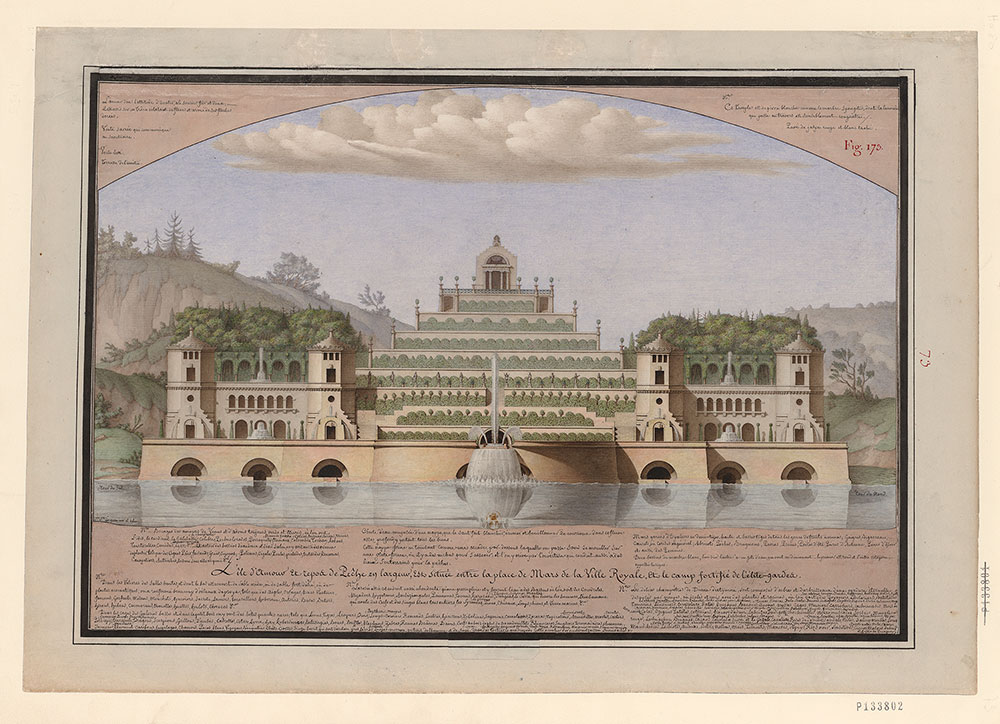
Situated between the military grounds of a royal city and a fortified encampment for elite troops, this island offers a quiet place for repose. Rising from the waters, a series of monumental terraces houses a menagerie of wild animals and birds in cages or in the surrounding woods. Lequeu painstakingly enumerated the many creatures in a series of lists. The island is surmounted by a temple of white stone paved in red jasper, which, as Lequeu notes, emits a rosy glow in daylight—an effect the artist had read about in an early eighteenth-century description of a castle in Ankara, Turkey.
Jean-Jacques Lequeu (1757–1826)
Island of Love and Fisherman’s Rest, from Civil Architecture, 1810–25
Pen and black ink, brown wash, watercolor
Bibliothèque nationale de France, Departement des Estampes et de la photographie
Jennifer Tonkovich: While some of Lequeu's designs were practical or produced for competitions, others describe entire realms he invented. To better understand these imagined environments, we need to delve into the lengthy, handwritten paragraphs that offer even greater detail than the drawings themselves. The notes on this page reveal the incredible depth of Lequeu's book knowledge, his curiosity about the natural world, and his ability to create an environment enriched with unheard-of biodiversity. For example, among the animals found on the island's menagerie, he lists lions, tigers, leopards, bears, lynx, fox, otters, hedgehogs, tamarins, sable, tapirs, sloths, armadillos, beavers, and even unicorns. Many of the more obscure creatures on the list are animals described in travel literature. Thus, the list includes a creature from the Maldives described as a pimones, which is now thought to be a type of shark. Also on the list is a water hog from Zaire called an embiziangulo, which Lequeu found described in a 1714 publication on African Rivers. Lequeu's lists reveal the research that went into developing a vision for his fantasy island.
